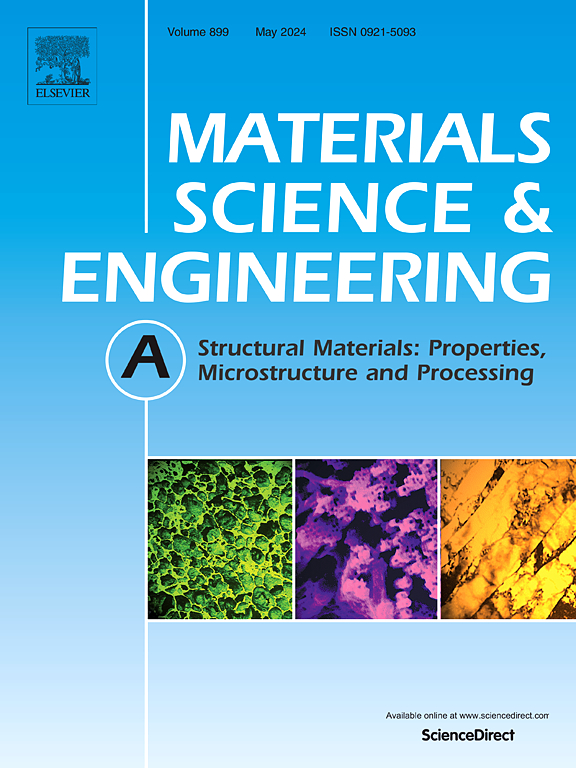双相不锈钢的氢脆:拉伸预应变的影响
IF 7
2区 材料科学
Q1 MATERIALS SCIENCE, MULTIDISCIPLINARY
引用次数: 0
摘要
研究了变形组织对双相不锈钢(DSS)氢脆敏感性的影响。通过改变预应变温度(室温和80℃)和应变水平(5 - 15%),调整了微观组织演变,特别是铁素体相的几何必要位错(GNDs)和奥氏体相变形孪晶的分布。原位充氢条件下的慢应变速率拉伸试验(5 × 10−6 s−1)表明,预应变降低了HE敏感性,其改善程度取决于温度和应变水平。对于室温预应变,在5 - 10%应变下,HE灵敏度下降了31 - 34%,而在15%应变下仅下降了15%。相比之下,80°C的预应变在5 - 10%应变下导致适度降低(~ 10%),但在15%应变下导致更明显的降低(~ 32%)。值得注意的是,在80°C下预应变5 - 10%的样品显示出与充氢退火材料相当的强度-塑性产品,但强度明显更高(增加40%以上)。提高的HE电阻主要是由于形成了密集的GND网络,这些网络充当了强大的氢捕集器,从而限制了裂纹尖端的氢浓度。相比之下,在室温下施加高预应变水平(15%)会促进奥氏体中广泛的变形孪晶和滑移带,从而促进氢辅助开裂,从而降低HE电阻。本文章由计算机程序翻译,如有差异,请以英文原文为准。
Hydrogen embrittlement of duplex stainless steel: Effect of tensile prestrain
This study investigates the effect of deformation-induced microstructures on the hydrogen embrittlement (HE) sensitivity of duplex stainless steel (DSS). By varying the pre-strain temperature (room temperature and 80 °C) and strain level (5–15 %), the microstructural evolution—particularly the distribution of geometrically necessary dislocations (GNDs) in ferrite phase and deformation twins in austenite phase was tailored. Slow strain rate tensile testing (5 × 10−6 s−1) under in-situ hydrogen charging revealed that prestraining mitigates HE sensitivity, with the degree of improvement depending on temperature and strain level. For room-temperature pre-straining, the HE sensitivity decreased by 31–34 % at 5–10 % strain, but only by 15 % at 15 % strain. In contrast, pre-straining at 80 °C led to a modest reduction (∼10 %) at 5–10 % strain, but a more pronounced decrease (∼32 %) at 15 % strain. Notably, samples pre-strained at 80 °C with 5–10 % strain showed a strength–ductility product comparable to that of the annealed material under hydrogen charging, but with a markedly higher strength (over 40 % increase). The improved HE resistance is primarily attributed to the formation of dense GND networks, which act as strong hydrogen traps, thereby limiting hydrogen concentration at crack tips. In contrast, a high pre-strain level (15 %) applied at room temperature promotes extensive deformation twinning and slip bands in austenite, which facilitates hydrogen-assisted cracking and thus reduces HE resistance.
求助全文
通过发布文献求助,成功后即可免费获取论文全文。
去求助
来源期刊

Materials Science and Engineering: A
工程技术-材料科学:综合
CiteScore
11.50
自引率
15.60%
发文量
1811
审稿时长
31 days
期刊介绍:
Materials Science and Engineering A provides an international medium for the publication of theoretical and experimental studies related to the load-bearing capacity of materials as influenced by their basic properties, processing history, microstructure and operating environment. Appropriate submissions to Materials Science and Engineering A should include scientific and/or engineering factors which affect the microstructure - strength relationships of materials and report the changes to mechanical behavior.
 求助内容:
求助内容: 应助结果提醒方式:
应助结果提醒方式:


